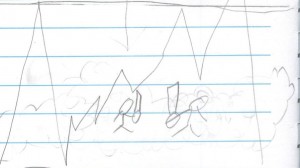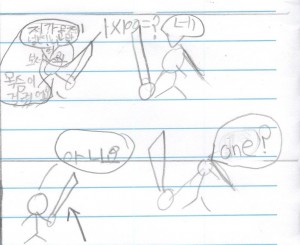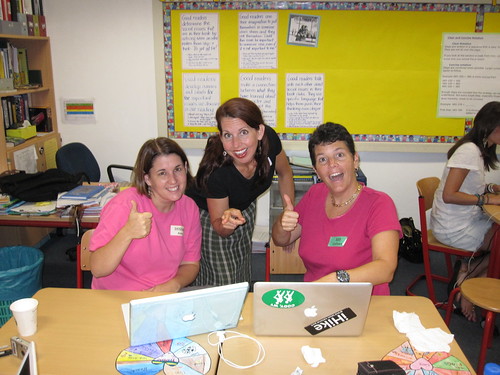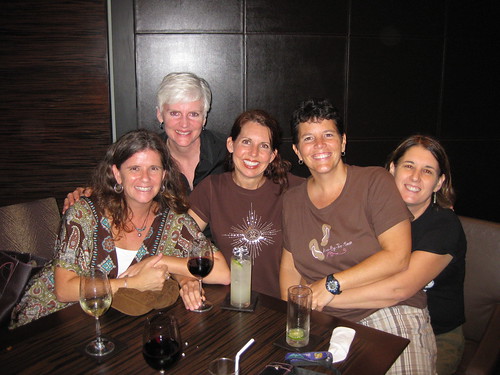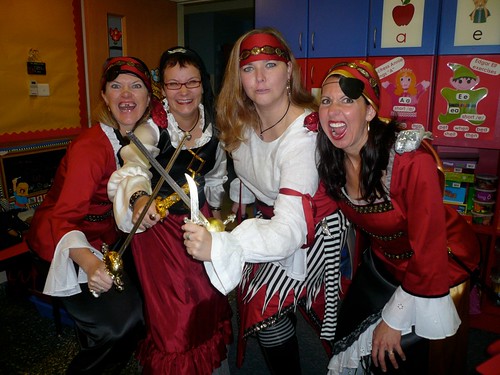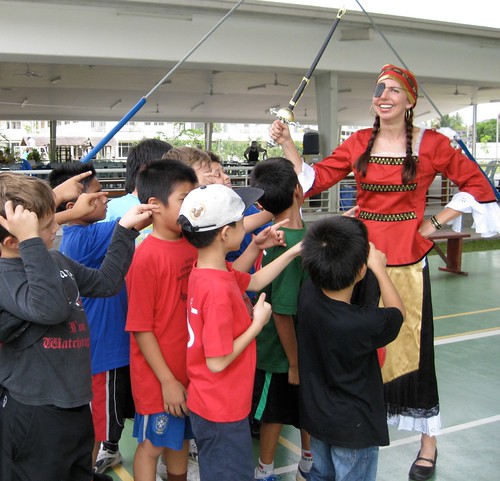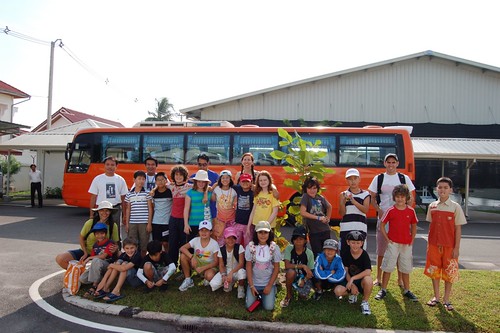As a teacher of English to kids who don’t speak English, I spend much of my time waving around flashcards, overenunciating vocabulary words, leading youngsters through silly songs with repetitive lyrics and actions, and contorting my face and body in ways that help communicate the mysterious language.
I can’t say the word “book” without automatically putting my hands together as in prayer and then opening them up to read the story. I can’t talk about an abstract concept without automatically reaching for a marker to sketch a clarifying illustration on the board.
On a good day, a student will poke me, point out the window, and say, “Sun!”
“Yes, it’s a beautiful sunny day!” I’ll exclaim. “Is it raining today? Nooooo! Is it snowing? Nooooo! It’s sunny! Good job! Did everyone hear Jenny tell us about the weather? She said it’s sunny! Super!”
On a bad day, I’ll ask, “How’s the weather today?” Some poor kid will answer, “Sun!” and then I might possibly have a total meltdown.
“No! We don’t say the weather is SUN! We say ‘It’s sunny!’ I have told you that a million freakin’ times! ‘Sun’ is a noun. ‘Sunny’ is an adjective. Geez, have I taught you NOTHING?!”
Of course, I don’t really say that stuff out loud. But I do think it. A lot. Especially in that first semester of the school year when progress … seems … so … slow.
I just get impatient. I want them to hurry up and learn English so they can change their social outcast status, participate in class discussions and milk every drop of discovery that school has to offer them. Language researchers have repeatedly found that fluency might elude a student for up to seven years, and it’s totally normal for a child to experience a lengthy “silent period,” during which he or she won’t utter a single English syllable. Every so often in those first few months of the school year, I temporarily reject research and its accompanying logic, and I feel compelled to throw a little mental temper tantrum at the mind-numbing pace of language acquisition.
Right about now, however, as the first semester is winding down, there’s a sudden dearth of those cerebral hissy fits. Instead, I can’t help but notice how terribly brilliant all my students are! My eyes, more often than not, widen in admiration rather than roll in frustration when a child answers a question or shares an idea. Sometimes I even find myself asking a question with my back turned to the group, and students actually ANSWER – even though they can’t see my facial expressions, read my lips or take cues from a gesture. It’s like the English Fairy waved her magic wand, sprinkling comprehension dust over all their little heads.
Today, I was teaching some words for food and drinks to a group of English beginners. When I held up the flashcard for coffee, I said, “I like drinking coffee!” Then I grasped the flashcard in a passionate embrace and said, “I LOVE drinking coffee!” Fidgety giggles ensued.
“Do YOU like drinking coffee?” I asked.
Correct answers included (a) I like drinking coffee, (b) I don’t like drinking coffee, or (c) a simple thumbs up or thumbs down to show understanding. To my surprise, one excruciatingly shy second grader popped out of her seat and said, “I don’t like drinking coffee, but my mother and father like drinking coffee.” She didn’t pronounce any ending sounds, but it didn’t matter. She spoke!
At that moment, I heard angels singing and I couldn’t stop myself from giving her a big weepy hug. (Yes, I know I could get arrested for that in America, but such things are still OK in the holistic international teaching world.)
Another end-of-semester triumph occurred in a first-grade classroom earlier this week. I was providing “in-class support” during Miss Jill’s writing lesson, so I sat with a little Vietnamese boy who didn’t speak a lick of English four months ago. First, he drew a picture filled with aggression, complete with ninja warriors and weapons of mass destruction. Next, he told me what was in the picture: good boy, bad boy, fighting, shooting. He didn’t know the words for “tank” or “bullets” or “strong,” so I explained them and helped to label his picture.

Then he told me the story, and I dictated it back, showing him how to link together the “sight words” he already knew with the labeled picture so he could write his exciting action story.
And he did. Here it is.
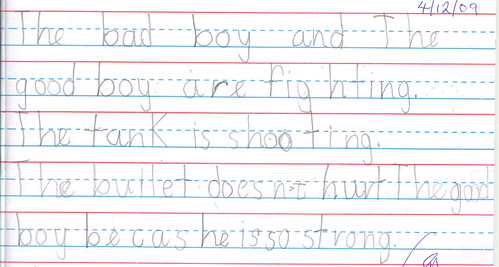
While we worked, I felt a pang of guilt for teaching this child the vocabulary of violence. On the other hand, who am I to deprive a little boy from writing about what interests him most? Last year, visiting author Ralph Fletcher told our Shanghai American School staff that boys WILL write violent stories, and teachers must give them some artistic freedom and validation of their ideas. I agree.
Even more than Ralph Fletcher’s approval, though, I found reassurance in the big smile that stretched across my student’s face as he read his own writing out loud over and over again.
In that smile, I also found a little reminder of why I love teaching English as a Second Language: Sure, the school year – especially the first semester – is filled with moments of agonizing self-doubt and sleepless nights as I stress about children spending their days bombarded by meaningless sounds and texts. Lucky for me, I get to collaborate with talented classroom teachers, who create a safe, supportive, language-rich environment for those English learners. And best of all, I get to witness the proud grins when those sounds suddenly make sense, those texts reveal facts and fairy tales, and that alphabet offers the power – real POWER – to share thoughts, experiences and make-believe with other people who also understand this crazy language!

